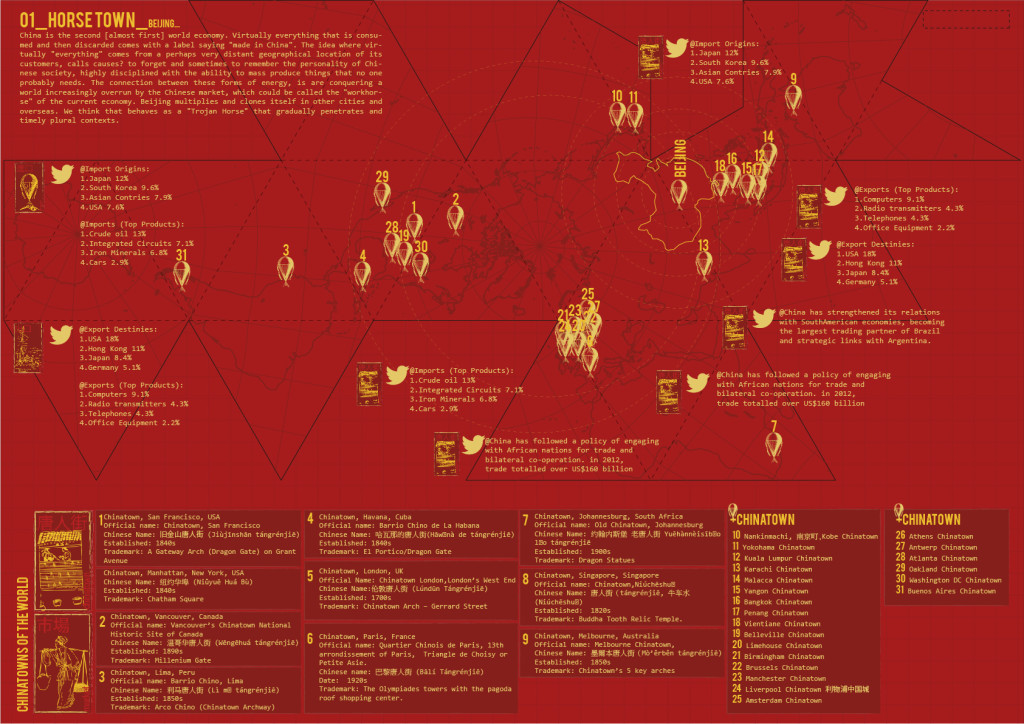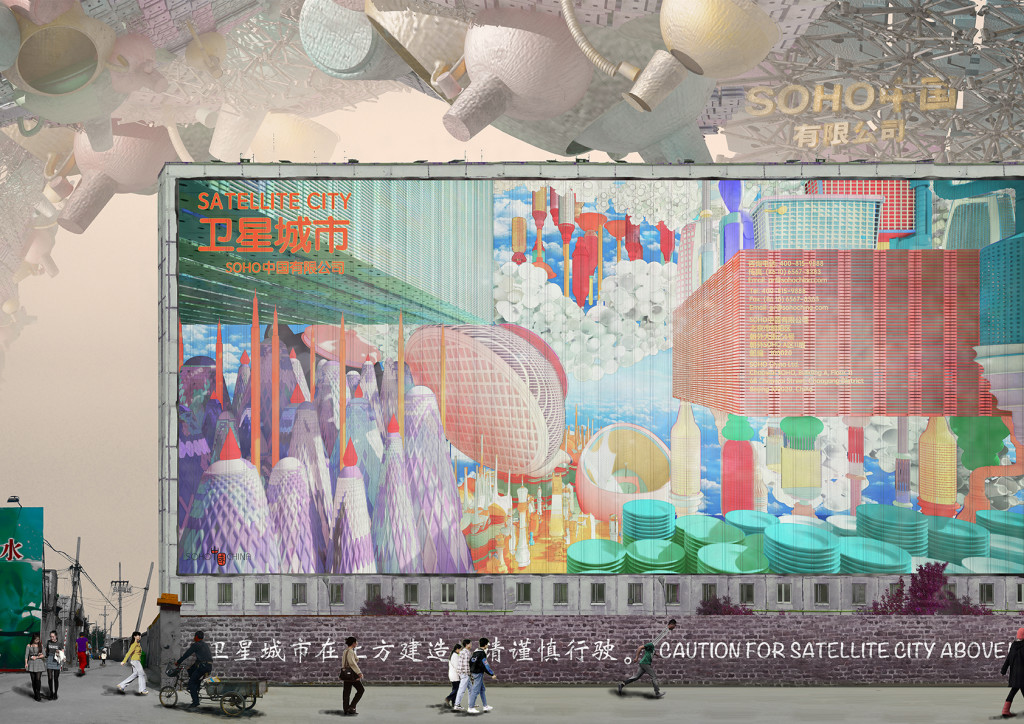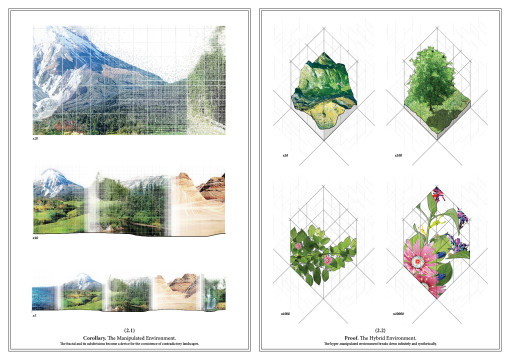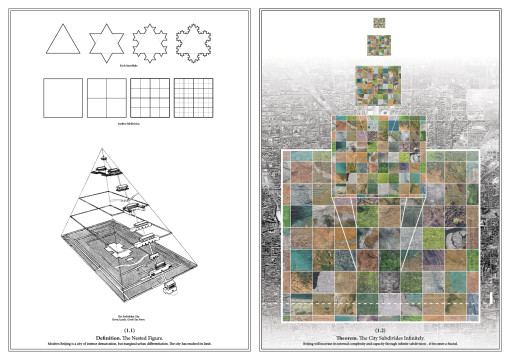Info:
Title: SUPER(inner)CITY - Code: 7d845Contest: Beijing / 2014
By: Melissa Shin - Isaiah Miller
Views: 5011 Likes: 42
Votes:
Greg Lynn 9 Ai Weiwei 6 Sou Fujimoto 8 Eric de Broches des Combes 87.8
SUPER(inner)CITY
While globalization was previously understood as a political-economy of culture and ideology, the summation of the globe is now inextricably tied to the study, observation and projection of Earth’s changing climate. As we continue to be confronted with a daunting new environment, cities have become representative of the new planet ideology. Extreme population growth, pollution, and resource depletion are only a few of the characteristics of the future cityscape. The captive globe as a model of globalization, has evolved into a captive planet of ideologically designed landscapes. While many cities around the world share the urgency of new planetary challenges, the extreme by which China is forced to cope with these issues and the autonomy it has gained through sheer economic and political power is unprecedented. These demands are exacerbated in the capital Beijing. Through science and technology, the city has found new ways to cope with its ever-expanding range of problems. During the 2008 Olympics, the city resorted to the act of cloud seeding to modify its environment, one that is plagued by intense smog and pollution. Cloud seeding shoots particles in the air to modify the natural cycle of precipitation and cleaning the air. The ethical ease by which the environment is manipulated belies a planetary ideology in which the landscape and its inhabitants are a blurred composite that is part natural and part synthetic – the environment becomes a manufactured hybrid of technology and nature. In what Kevin Lynch terms a “cosmic city,” Beijing’s nested urban morphology is a product of its imperial history and its rapid radial expansion. The city is one of intense demarcation, but little spatial or programmatic differentiation. The outward expansion of Beijing has exceeded its limit and radial expansion must now become a centripetal intensification of the center as the city increases its internal complexity and capacity through infinite subdivision – Beijing becomes a fractal. Though its form is infinitely self similar, the evolution of cloud seeding will allow for microscale climate differentiation, and each subdivision will allow for the profound manipulation of the landscape and environment. Disparate and contradictory landscapes will coexist within each infinite subspace: an estuary emerges on the first ring, containing a savannah from the Serengeti and sprouting pagoda trees with robotic arms. With the totalization of design at the micro scale comes the extreme differentiation of the environment at every scale. The SUPER(inner)CITY is a place without scale and without limit. Borders, edges, and walls no longer exist. The environment is the ultimate product of mass customization. Enhanced by technology, a new hybridized nature becomes entirely available for manipulation. With competing determinations, the city breaks down infinitely into differentiated environments and ecosystems, and the limits of a finite dimensional world disappear. “There are many entrances into the city, but each is shaped like the profile of every conceivable being. One enters the only one possible into a room of expected proportions. After becoming accustomed to the light and air, a further door is perceived which, with some slight contortion may be taken to a second room minutely stranger than the first. And so on, each space increasingly odd and impossible, yet in due order familiar, traversable, penetrable, and on and on until one’s own body is metamorphosized in form and substance emerging from the highest tower to join the aerial flight of the crystalline creatures at one in form and substance with the city itself.” (Donald Preziosi, Between Power and Desire: The Margins of the City)
Info:
Title: SUPER(inner)CITY
Time: 29 settembre 2014
Category: Beijing
Views: 5011 Likes: 42
Tags: -








